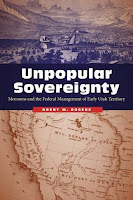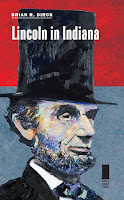[
Civil War in the Southwest Borderlands, 1861–1867
by Andrew E. Masich (
University of Oklahoma Press, 2017). Hardcover, 2 maps, photos, illustrations, appendices, notes, bibliography, index. Pages main/total:305/464. ISBN:978-0-8061-5572-2. $34.95]

Before the outbreak of the American Civil War, a delicate international and multiethnic balance of power existed in North America's Desert Southwest, a vast area that encompassed Arizona, New Mexico and West Texas, as well as the northern Mexican border states of Sonora and Chihuahua. Andrew Masich's
Civil War in the Southwest Borderlands, 1861–1867 makes a strong case that the Civil War time period in the region is better understood as a multitude of concurrent 'civil wars' fought among and between numerous indigenous groups, U.S. Hispanos, Mexicans, and Anglo-Americans. While the 1861-65 conflict between Union and Confederate forces did not cause these wars, it did create the necessary conditions for the outbreak of unprecedented scales of violent interaction and a drastic reordering of power. By 1867, the previous social, political, and economic order was largely swept away, and the United States was able to establish clear hegemony over the Southwest lands north of the border.
As most Civil War readers are aware, when a shooting war between the United States and newly formed Confederate States of America loomed, the Regular Army was forced to abandon many of its most isolated Southwest outposts. Before U.S. volunteer units could arrive to take their places, a significant power vacuum existed, one that was eagerly exploited by powerful native groups like the Apache and Navajo. The Confederacy also had its eyes on expansion. Already abundantly documented elsewhere, events related to the 1861-62 Confederate invasion of the Southwest and the convergence of Union columns from California and Colorado to oppose it are briefly but quite adequately recounted in the book. Assisted by Hispano and Indian allies, these federal troops were able to repel the Confederates and greatly curtail, but not eliminate, hostile indigenous threats. While hopes of establishing shortened supply lines using Mexican ports proved politically impossible, Union authorities were able to forge relatively friendly and cooperative relations with Juarista forces in northern Mexico. By 1867, the international border was a much more regulated boundary than ever before. Another major Anglo-American theme in the book is the Union triumph of logistics, which enabled their military forces to defeat the Confederate invaders (whose own practically non-existent support network proved disastrous) and operate against indigenous enemies year round (which often proved decisive during the winter months). In terms of recognizing the instrumental part U.S. volunteers, particularly California Column veterans, had in developing the infrastructure, mineral wealth, and economies of the Southwest territories during and after the war, Masich has already made important contributions to this well-established literature, and these findings are summarized in the book, as well.
In 1860, Mexico was emerging from its own Civil War, which resulted in the formation of a liberal government under Benito Juarez. Peace would prove elusive, however, as European powers intervened to collected repudiated debts. Even worse, the French committed large military forces to invade the interior. These captured Mexico City in 1863 and installed puppet emperor Maximilian I the following year. During this dangerous time of renewed civil war, northern Mexico was a Republican Juarista stronghold, and, as Masich shows in the book, even limited Mexican cooperation with Union forces across the border significantly hampered the mobility of the hostile tribes of the Southwest, who commonly used the international boundary for temporary shelter from pursuit. There was also another important connection. With the end of the American Civil War, a massive U.S. military buildup along the international boundary helped convince Napoleon III to withdraw his forces, and surplus arms and supplies smuggled across the border to Republican armies loyal to Juarez hastened Imperial defeat by 1867.
Hispanos also played a major role in the civil wars of the Southwest. According to Masich's research, while U.S. Hispanos comprised 60% of the population of Arizona and New Mexico, they suffered over 80% of civilian deaths at the hands of hostile tribal raiders during the 1861-67 period and were the primary victims of property and livestock loss. Having no input to their recent change in nationality, the Hispano population possessed no real ideological loyalty to the United States but nevertheless welcomed the increased civil order and protection that U.S. volunteers brought to the region. The book examines at suitable length the integration of New Mexico volunteers into Union forces and their contributions to the war; however, little mention is made of the extensive militia system created by territorial officials for local defense. Studied at great depth in border historian Jerry Thompson's recently published magisterial history of New Mexico's Civil War volunteers and militia, the organization had many problems, but it did free up large numbers of more active soldiers for service in the field against Indian and Confederate enemies.
Among the indigenous populations of New Mexico and Arizona, centuries-old rivalries meant that few bands actively sought alliances to combat the increasing strength of their Anglo, Hispano, and Mexican enemies. These divisions between, and even within, various tribal groups were eagerly exploited by their opponents, who frequently employed highly motivated Indians as auxiliaries and scouts. The more agriculturally-based and less mobile tribes that lived along the Gila and lower Colorado rivers were the frequent victims of fast-moving Apache and Navajo raiders, and they developed a mutually beneficial relationship with Union forces during the Civil War that is well described in the book. Federal troops aided these more sedentary tribes by attacking and rounding up their most dangerous enemies for confinement on far away reservation lands. In return, the Pima, Maricopa, and other Gila River tribes were able to sell to the army vast quantities of food and fodder sorely needed by troops like the California Column for use while trekking across the vast deserts of the Southwest.
All of the above mentioned interrelationships and civil wars are described and analyzed at great length in the book. As Masich also shows, the massive regional disruption that occurred during 1861-65 also led to the introduction of new forces into the region. The Anglo-Hispano-Indian alliance that greatly weakened the previously dominant Navajo and Apache raiding groups in the Southwest during the Civil War years also directly led to opportunities for further expansion by the Southern Plains tribes, who swept deeper into West Texas and eastern parts of New Mexico. This growing threat led authorities to order Kit Carson to lead a large military expedition against them in 1864, one that nearly led to disaster for the U.S. volunteers and their Indian auxiliaries at Adobe Walls.
The differing martial cultures of the study's competing ethnic and national groups have been well documented over the years, so there aren't any particularly surprising discoveries or interpretations on that score. The primary contrast in the book is between the generations-old cycle of violence consisting of raids (for livestock, tools, captives, and slaves), reprisals, and revenge-seeking between Indians and Hispanos in the Southwest and the arrival of Anglo-American armies that conducted sustained campaigns aimed at total subjugation. Though Masich often uses terms like "total war" and "extermination" as elements of warfare against the Apache and Navajo, he does clearly acknowledge (though only near the end of the book) that extermination was never U.S. or Confederate policy and that appalling public exterminationist rhetoric was primarily attention-seeking in nature, only rarely paired with actual deeds. It was also most typically the case that individual officers who espoused such extreme views, few as they were, were quickly overruled by superiors or removed entirely from their leadership posts.
Masich's research effort is impressive. Along the way, he scoured archives in both the U.S. and Mexico, and also delved deeply into the rarely used Indian Depredation Records. According to the author, these records (filed between 1796 and 1920) remain very poorly organized. Though clearly only a small percentage of violent acts were actually documented on paper, much information [ex. casualties, property losses by value and type, raiding patterns, tactics and frequencies by group, and much more] useful to scholars can be gleaned from the depredation files. The author found almost 700 records directly related to the time period and region under consideration in the book and, in addition to incorporating much of this information into the main narrative, was able to compile the data into some useful charts and tables. These and others collected from additional sources are placed in the book's appendix. Among other things they clearly illustrate the enormous uptick in violence during the 1860s and the groups most responsible for it.
Borderland studies are very popular at the moment. Many of the military and cultural interactions described in this book have been discussed and analyzed at length elsewhere in the literature, but Andrew Masich is the first scholar to create a powerful synthesis that meaningfully integrates all of these conflicts and relationships together in a single volume. His work in
Civil War in the Southwest Borderlands, 1861–1867 freshly defines the American Civil War period as a uniquely critical moment of social, political, and economic transformation in the Southwest region of North America. The author's deft use of interconnected civil wars as a framework for understanding these changes also ensures that the important parts played by each group in the reordered ethnic hierarchy are appropriately recognized.
 At this point, I don't think anyone who has seriously studied Pickett's Charge doubts the key role played by long and short ranged Union artillery fire in beating back the Confederate assault, but others go even further. The following passage from this study's description— "(t)he war witnessed many large scale assaults and artillery bombardments, but no example of defensive gunnery was more destructive than the ring of direct frontal and full-flank enfilading fire Hunt’s batteries unleashed upon Lee’s assaulting columns. The iron rain broke and drove back the massed attack within a short time, leaving a fraction of the attacking force to cross the Emmitsburg Road to scale the deadly Ridge."— certainly seems to place author David Schultz among those believing that the charge was already essentially broken by the time the front ranks passed over the Emmitsburg Road.
At this point, I don't think anyone who has seriously studied Pickett's Charge doubts the key role played by long and short ranged Union artillery fire in beating back the Confederate assault, but others go even further. The following passage from this study's description— "(t)he war witnessed many large scale assaults and artillery bombardments, but no example of defensive gunnery was more destructive than the ring of direct frontal and full-flank enfilading fire Hunt’s batteries unleashed upon Lee’s assaulting columns. The iron rain broke and drove back the massed attack within a short time, leaving a fraction of the attacking force to cross the Emmitsburg Road to scale the deadly Ridge."— certainly seems to place author David Schultz among those believing that the charge was already essentially broken by the time the front ranks passed over the Emmitsburg Road.













